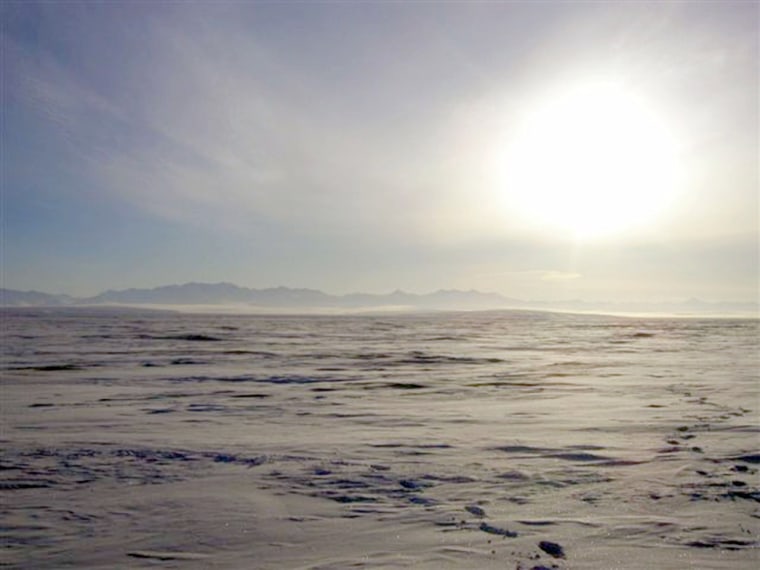It's becoming harder to find the right snow to build an igloo, and melting permafrost is turning land into mud. With climate change the nature of the Arctic is changing, too, in ways that worry the people who live there.
The Smithsonian's National Museum of Natural History opens a pair of exhibits on Saturday: "Arctic: A Friend Acting Strangely," and "Atmosphere: Change is in the Air," discussing what is happening to the climate and how it affects people living in the planet's northernmost areas.
"They are truly concerned," anthropologist Igor Krupnik said Tuesday of the Arctic natives.
Indeed, the Arctic exhibit title comes from an Inuit word natives have used to describe the changing climate — uggianaqtuq — suggesting unexpected behavior or "a friend acting strangely."
The ocean is eating their land as sea ice melts and storms erode shorelines and wash away fishing communities, changing climate means new plants in some areas and changes in migratory routes of animals people depend on for food, weather is stormier and food sources for polar bears and caribou change.
Since the 1950s, air temperatures have warmed over much of the Arctic, rain and snowfall have increased and sea ice is in decline.
While some government scientists have reported political pressure to limit their comments on climate change, Robert Sullivan, the museum's associate director for public programs, said that did not happen in the development of this exhibit.
"Here's the data," Sullivan said. "This is not a political position, it's just scientific data."
"There have been some suggestions that the data is unclear; well, the data is not unclear," Sullivan added, standing near a map of Greenland illustrating the melting of that island's giant ice cap.
In addition to Smithsonian staff, scientists from the National Oceanic and Atmospheric Administration, NASA and the National Science Foundation took part in developing the exhibit. It will remain at the museum until November and there are plans for it to travel to other museums.
While change is unsettling for many, it isn't necessarily all bad, the exhibit notes. For example, a reduction in sea ice could improve navigation and industrial development, the growing season lengthens and rich northern fisheries may expand.
Adjacent to the Arctic exhibit is Atmospheres, looking at changes in the air around us, notably the rising level of carbon dioxide which scientists say is a major factor in trapping heat from the sun and raising temperatures.
The Smithsonian Environmental Research Center in Edgewater, Md., has been studying the effect of increasing carbon dioxide levels on plants for years, said center director Anson H. Hines.
Plants like carbon dioxide, using it in their growth, and higher levels of the gas spurred them to grow larger, he said. The plants also became more efficient at water use. However, Hines added, even though the plants grew larger they were less nutritious.
"Global climate change is one of the most significant challenges humankind has ever faced," said museum director Cristian Samper. "These landmark exhibitions bring us closer to the science that provides the foundation for understanding how the Earth has changed through time. The exhibitions also convey the human dimension that must be considered in addressing how to respond to the environmental changes that are taking place not just in the Arctic, but all over the globe."
